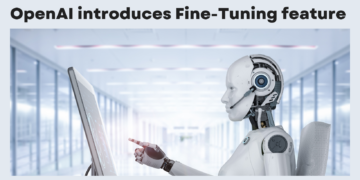Predictive AI, a subset of Artificial Intelligence, is revolutionizing how businesses operate by harnessing the power of historical data to forecast future trends and make informed decisions. By analyzing patterns and trends, predictive AI models provide valuable insights that drive business growth and efficiency.
How Predictive AI Works
The technology uses Machine Learning algorithms to assign probability weights to potential future outcomes. This process involves two primary types of problems:
Classification problems focus on determining whether a specific event is likely to occur. For example, a bank might use a predictive AI model to assess the likelihood of a loan default. The model would analyze a borrower’s financial history, credit score, and other relevant data points to predict the probability of the borrower failing to repay the loan. This information can then be used by the bank to make informed decisions about loan approvals and interest rates.
Regression problems, on the other hand, aim to forecast the quantitative impact of multiple factors on a continuous variable. Imagine a retail company trying to predict future sales revenue. A predictive AI model could be trained on historical sales data, considering factors like seasonality, marketing campaigns, and economic trends. By analyzing these factors, the model can predict the expected sales revenue for a given period. This information helps the retailer optimize inventory levels, staffing schedules, and marketing campaigns to maximize profitability.
The Benefits of Predictive AI
Improved Decision Making
Predictive AI empowers businesses to move beyond guesswork and intuition by providing data-driven insights. By analyzing historical data and identifying patterns, predictive models can forecast future trends and predict potential outcomes. This allows businesses to make informed decisions based on concrete evidence, leading to better strategic planning, resource allocation, and overall business performance.
Enhanced Efficiency
Predictive AI automates many of the tedious and time-consuming tasks associated with data analysis. By leveraging machine learning algorithms, predictive models can sift through vast amounts of data to identify relevant patterns and trends. This not only saves businesses time and resources but also allows them to focus on more strategic initiatives. Additionally, predictive AI can streamline business processes by automating tasks such as demand forecasting, customer segmentation, and risk assessment.
Risk Mitigation
Predictive AI plays a crucial role in helping businesses identify and mitigate potential risks. By analyzing historical data and current trends, predictive models can anticipate problems before they arise. For example, a financial institution can use predictive AI to identify customers at risk of loan default, allowing them to take proactive measures like early intervention or debt collection strategies. Similarly, a manufacturing company can use predictive AI to predict equipment failures, enabling them to schedule preventive maintenance and avoid costly downtime.
Personalized Customer Experiences
In today’s competitive landscape, businesses need to understand their customers on an individual level. Predictive AI allows businesses to personalize customer experiences by tailoring products, services, and marketing campaigns to specific customer preferences. By analyzing customer data, such as purchase history, browsing behavior, and demographics, predictive models can identify customer segments with similar characteristics and needs. This enables businesses to deliver targeted marketing campaigns, recommend relevant products, and provide personalized customer service, ultimately leading to increased customer satisfaction and loyalty.
Real-World Applications of Predictive AI
Finance:
- Fraud detection: Identifying suspicious transactions and preventing financial losses.
- Credit risk assessment: Evaluating the creditworthiness of borrowers.
- Personal Finance: Predictive AI can anticipate your needs and curate your budget, keep you updated with information about your investments and help you manage your finances better.
- Algorithmic trading: Making automated trading decisions based on market data analysis.
Retail:
- Demand forecasting: Predicting product demand to optimize inventory levels and prevent stockouts or overstocking.
- Customer segmentation: Identifying customer groups with similar preferences for targeted marketing campaigns.
- Recommendation systems: Suggesting products based on customer purchase history and behavior.
Healthcare:
- Disease prediction: Identifying individuals at risk of developing specific diseases for early intervention.
- Patient risk stratification: Assessing patient health risks to prioritize care and allocate resources effectively.
- Drug discovery: Accelerating the drug development process by predicting drug efficacy and safety.
Manufacturing:
- Predictive maintenance: Predicting equipment failures to schedule maintenance proactively and prevent downtime.
- Supply chain optimization: Optimizing inventory levels, transportation routes, and production schedules to improve efficiency and reduce costs.
- Quality control: Identifying product defects early in the manufacturing process to prevent quality issues.
Challenges and Considerations
While predictive AI offers immense potential, it also comes with challenges:
- Data Quality: The accuracy of predictive models heavily relies on the quality and completeness of the data used for training.
- Bias: If the training data contains biases, the model may perpetuate those biases, leading to unfair outcomes.
- Interpretability: Some complex models, such as deep neural networks, can be difficult to interpret, making it challenging to understand the reasoning behind their predictions.
- Ethical Implications: The use of predictive AI raises ethical concerns, such as privacy, fairness, and accountability.



























